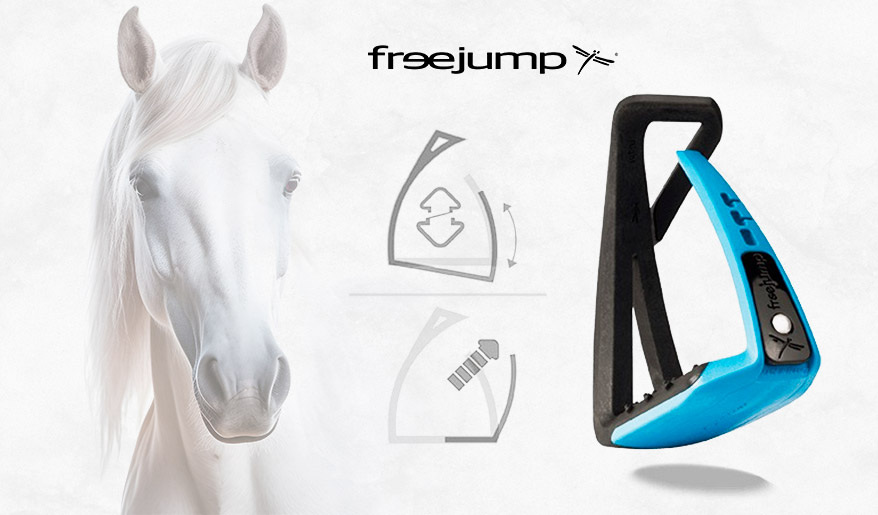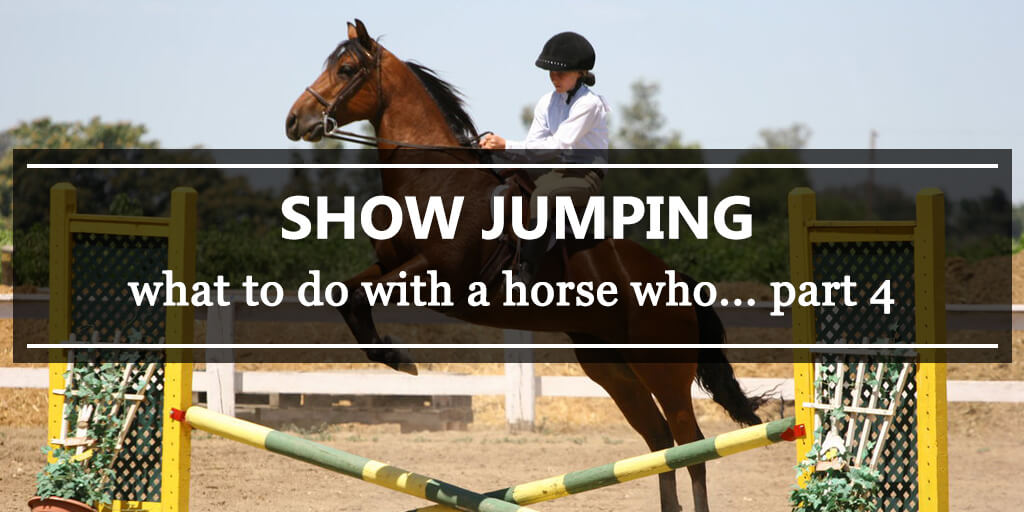
background source: horsestockphotos.deviantart.com
There are many reasons for which the horse might be unwilling to jump, which we mentioned in previous articles 1, 2, and 3. An effective rider can identify what is the source of such situation and change it. In order for everybody to be able to become such rider, we will try to take a closer look at yet another, most common horses' "problems", which show while jumping. We will also try to present you solutions how to change such unpleasant (for both the horse and rider) situation.
Today, in the last article of the series, we will discuss cases, when:
1. Horse does not change his leg at a canter.
2. Horse lands on a wrong leg at a canter.
3. Horse has too much margin while jumping.
Horse does not change his leg at a canter
Causes:
Every healthy horse is capable of easily changing his leg at a canter. If he does not do that, the only cause might be rider's mistakes, bo may not properly keep the course of riding, pace of gait or horse's bend which would be accordant with the direction of movement. Additionally, if the rider has no idea how to communicate with the horse, changing his leg will always be impossible to perform.
Solution:
Before you eliminate the aforementioned mistakes, there is no point in teaching your horse. However, if you feel ready, do not act hastily. First, the horse has to be properly prepared by conducting basic training, before you start demanding change of his leg.
For some horses, lead changing leg at a canter is a so-called "piece of cake". There are some horses that propose changing their legs on their own, whenever such need emerges (for example while changing direction). However, you will have to put more effort into working with some other horses, because they might find it difficult.
If you have reached the phase, where your horse maintains even pace after jumping, his posture is straight and his gait is regular, it is the right moment to begin teaching to lead change his leg. The below exercise will make it easier for your horse to understand what do you expect from him.
Exercise: lead change of leg on poles
- Arrange 6 poles as presented below.
- Perform a volte at a canter on the right leg (green route) and approach the pole placed in the middle of arena. Make sure that your horse is completely straight and you are right above his centre of gravity, and moving in straight line approach another pole.
- At a moment when you are above the second pole, look left, at the same time asking your horse to change his position. Bend him to the left, so after a jump he lands on his left leg.
- If the horse does not change his leg or starts to cross, the last pole gives you opportunity to improve this exercise. After jumping it, you can make a volte and then try to change legs once more.
- You can perform the same exercise to the other side (blue route).
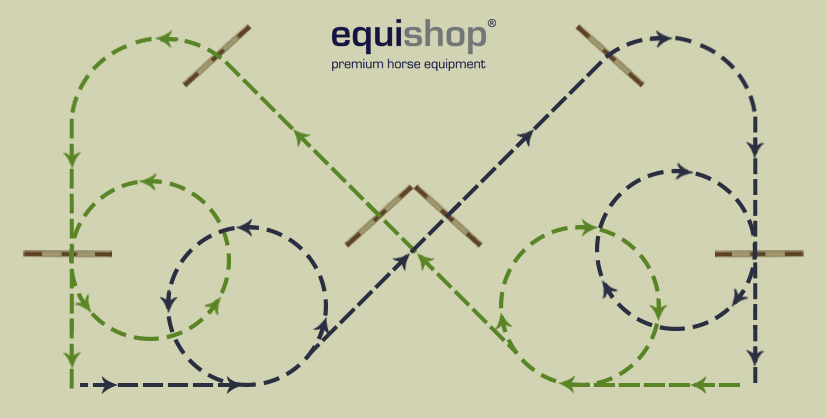
Horse lands on a wrong leg at a canter
Causes:
- If your balance during jumping is far from perfect, or communication with the horse is not clear enough then landing on right or left leg will always be the horse's choice. The animal will land on this leg which seems more comfortable to him.
- If your horse always lands on the same leg, regardless of the amounts of trials you have made to teach him landing on the other leg, it might be a signal that there is something wrong with his health. The main cause of such situation might be issues with his spine or limbs.
Solution:
Teaching your horse to land on the "proper" leg is a matter of exercises and improvement of your communication with your horse. Below we present an exercise that should help in such case.
Exercise: landing on the proper leg - 5 straight rails
- Arrange 5 obstacles - low (30-50 cm) straight rails as presented below.
- Begin from riding at a trot, approaching the obstacle in the middle of arena (green route). While being above the obstacle look left on another obstacle. Moving at a canter jump the straight rails, riding on the left leg.
- Repeat the same in opposite direction - at a trot approach the straight rails, jump looking right and at a canter on the right leg jump the straight rails (blue route).
- If your horse can perform these exercises with no problem in both sides (blue + green route), you can try riding the whole arrangement (red route).
Try to emphasise the exercise with landing on the proper leg, especially the one on which your horse is unwilling to land on. Remember to approach the obstacles perpendicularly before the very take-off. While landing, you have to be sure that the horse knows where you want to ride next.

Note!
We usually require fluent reaction from our horses while approaching an obstacle. We expect that he will not be tense before the jump, keeping the rhythm and regularity of gait. The horse will not be capable of meeting your expectations if during approaching (and jump) you will start to "signalise" direction by kicking him with your calves, pulling the reins or rapidly leaning your torso. Sometimes it is enough to look in the proper direction, the one you want to ride in, and your horse will sense a slight change in the position of your calves, torso, hips and pressure in the saddle.
Horse has too much margin while jumping
Some horses, usually those young and unexperienced, prefer to jump really high over an obstacle. Then you might say that the horse has a "big margin". How does it look in reality? For example: he jumps over an obstacle that is 30 cm high flying at the level of 100 cm. What is wrong with that? It is uneconomic. The animal has to put more effort into "raising" to 100 that to 30 cm, so his joints are more burdened, and the animal himself is more tired. Additionally, no rider expects that jump over such low obstacle will entail such effort - so the rider is not ready, does not follow the horse with his or her body, staying behind and dangles on the reins, and in result - on the horse's muzzle.
Causes:
- Some horses do it because they are scared because of previous bad jumping experience.
- Young, unexperienced horse has not yet developed jumping sense and he prefers to has some "margin" to jump over the obstacle.
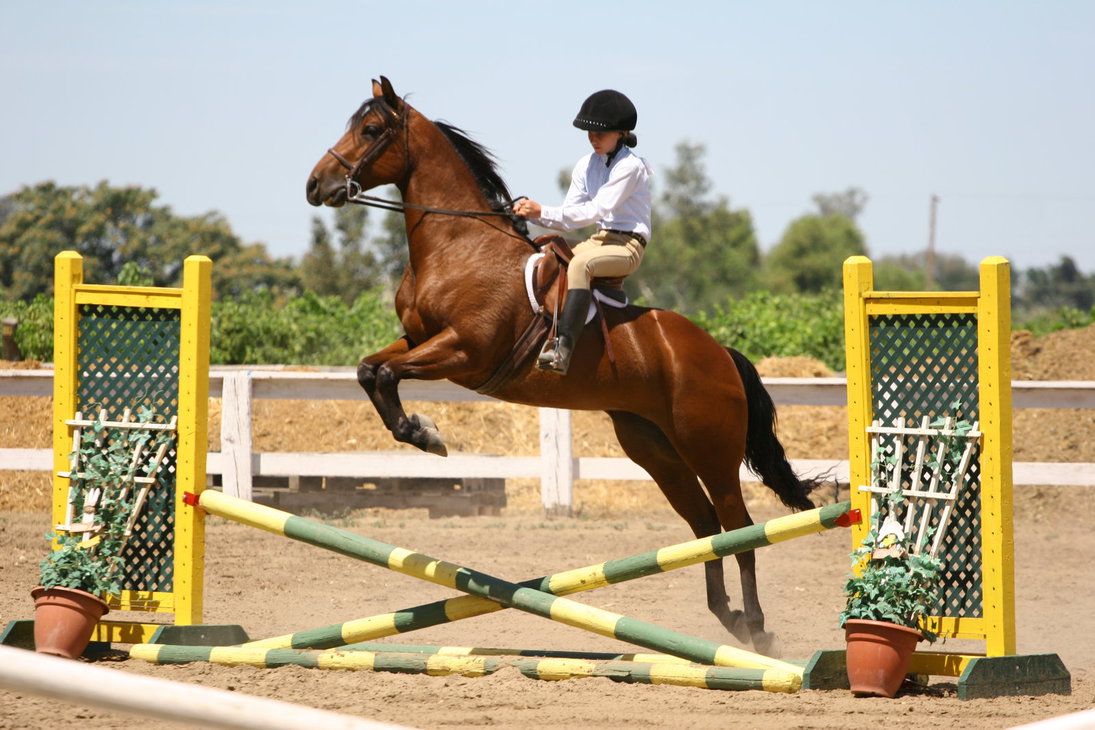
horsestockphotos.deviantart.com
Solution:
- If your horse jumps with margin because he is afraid, you have to give him time to get accustomed with jumping again. It is good to lower your expectations and go back to exercises on poles and little obstacles, so you can win his trust back and give him a chance to get rid of his concerns.
- If your horse shows no insecurity nor fear, and additionally he is young and unexperienced and jumps with a huge margin, it is very common at the beginning of training and you should not worry too much. Usually it is seen as an advantage, because it is visible straight away that the horse has great jumping abilities and how mindful he is while jumping the obstacles from the very beginning of his training. You can turn a blind eye to it during a few first trainings with such "fresh" horse. However, if despite the passing of time and number of jumps, the problem remains, you have to react. Your task will be to teach your horse the proper jumping technique in order to stimulate the process of his development and gaining experience.
Such young horses gain the most while frequently exercising on low obstacles. It is good to introduce a lot of pole exercises, using them also as a form of dressage training. We already discussed working on poles in another atricle, for example work on cavaletti. You can find many exemplary exercises in other notes (cavaletti - work on arcs, jumping gymnastics, warm-up).
Note!
Try to remember about your seat - you already know that your horse has too much of margin, so do not let him surprise you. Despite approaching 30 cm straight rails, prepare for the jump to be much higher and longer. Id you do not lose your balance, you will not punish the horse while jumping. You will not stay behind with your body, dangling on the reign or jerking it while landing, thus negatively affect his muzzle. Young horse has to find the performed exercises pleasurable. So you cannot contribute to his bad associations with jumping.
Remember to always look above the obstacle. Lowering your head results in rounding your back and having a "bent" seat. Hunching distances you even more from the horse, so you will fly over him (higher than him) instead of flying with him. That provokes the horse even more to jump with too big margin.
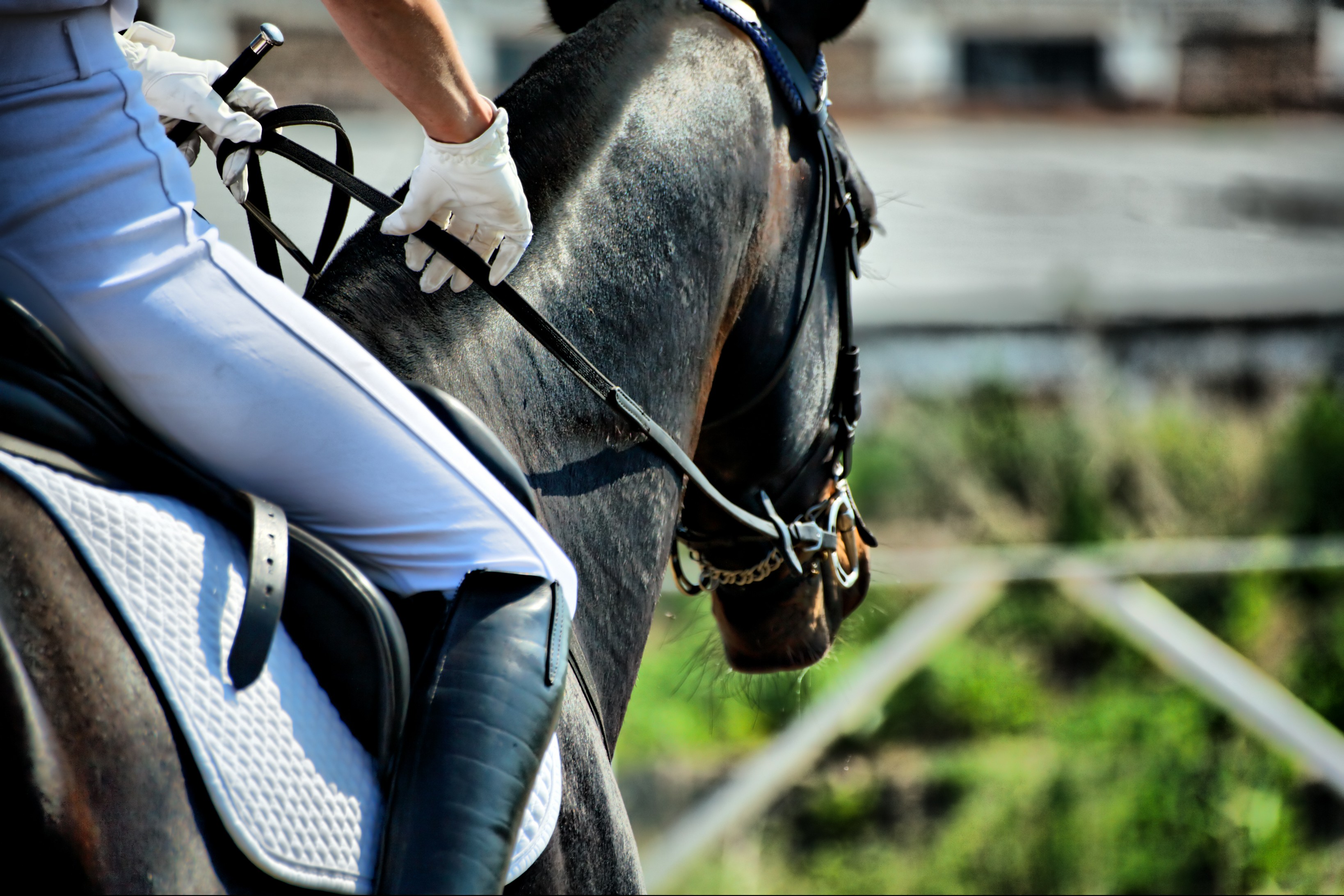
source: shutterstock.com
Most important rules concerning elimination of the horse's mistakes while jumping:
- Do not jump the whole parkour. Repeating an exercise on one obstacle (straight rails or envelope) of medium height (40-50 cm) will allow you to eliminate mistakes.
- Do not expect to eliminate all mistakes in one training. Usually the horse's improper behaviour has already become his habit. Thus, you have to be very patient and prepare yourself that "unteaching" him and teaching him new "pattern of behaviour" while jumping might take a very long time (even a year). Everything depends on how deeply the given reaction took roots at the horse.
- It is good to consider if you are the cause of your horse's mistakes. If you lack balance, cannot follow the horse with your body and "give away" your hand, you have to be aware that every jump with you on the horse's back is not a pleasant experience for him. You should work on yourself first, preferably with a coach and on a horse-professor (experienced), who would forgive you all your mistakes and shortages.
- If you have problems with your horse while jumping, usually it is caused due to lack of solid dressage basics and trust towards the rider. If you skip certain elements of training, sooner or later you will have to go back to them. Thus, it is not worth losing time on re-teaching him the very basics. Try to train your horse step by step, without rushing next stages of training.
Also, remember that the very basis while jumping is always a helmet. Thus, it is worth investing in a helmet of good quality, one that would take impacts, having all the necessary safety certificates and meeting all European standards. It is good to invest in a solid vest as well. A vest which will protect you from serious injuries that may be caused during any hipotetic falls.
This is the last article from the series. We hope that our advice will prove helpful!



 background source: horsestockphotos.deviantart.com
background source: horsestockphotos.deviantart.com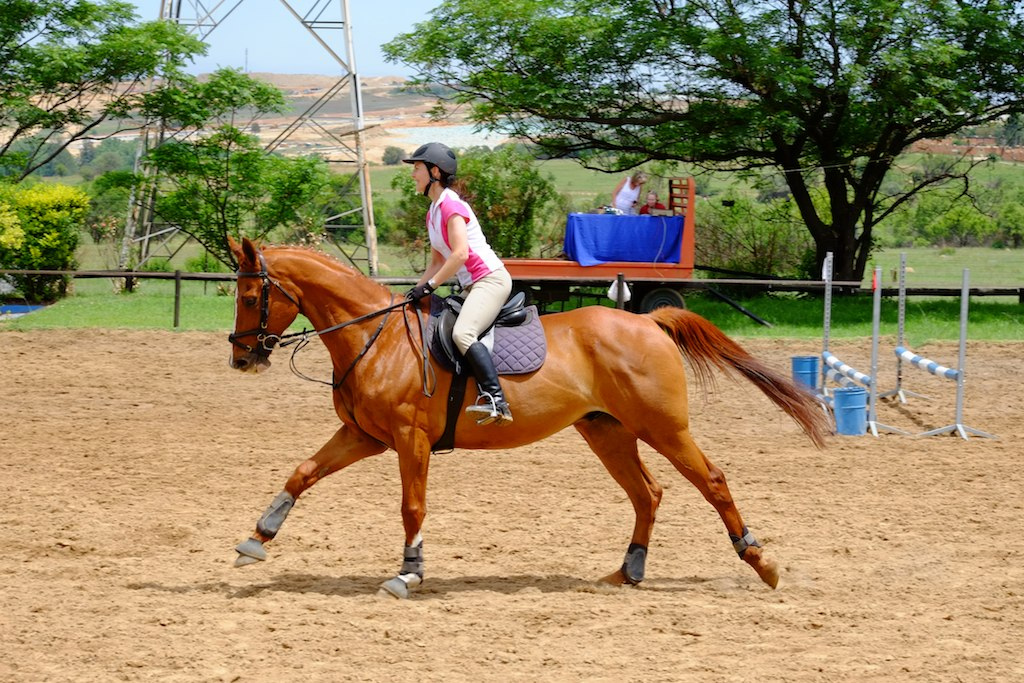 Photo's author:
Photo's author: 
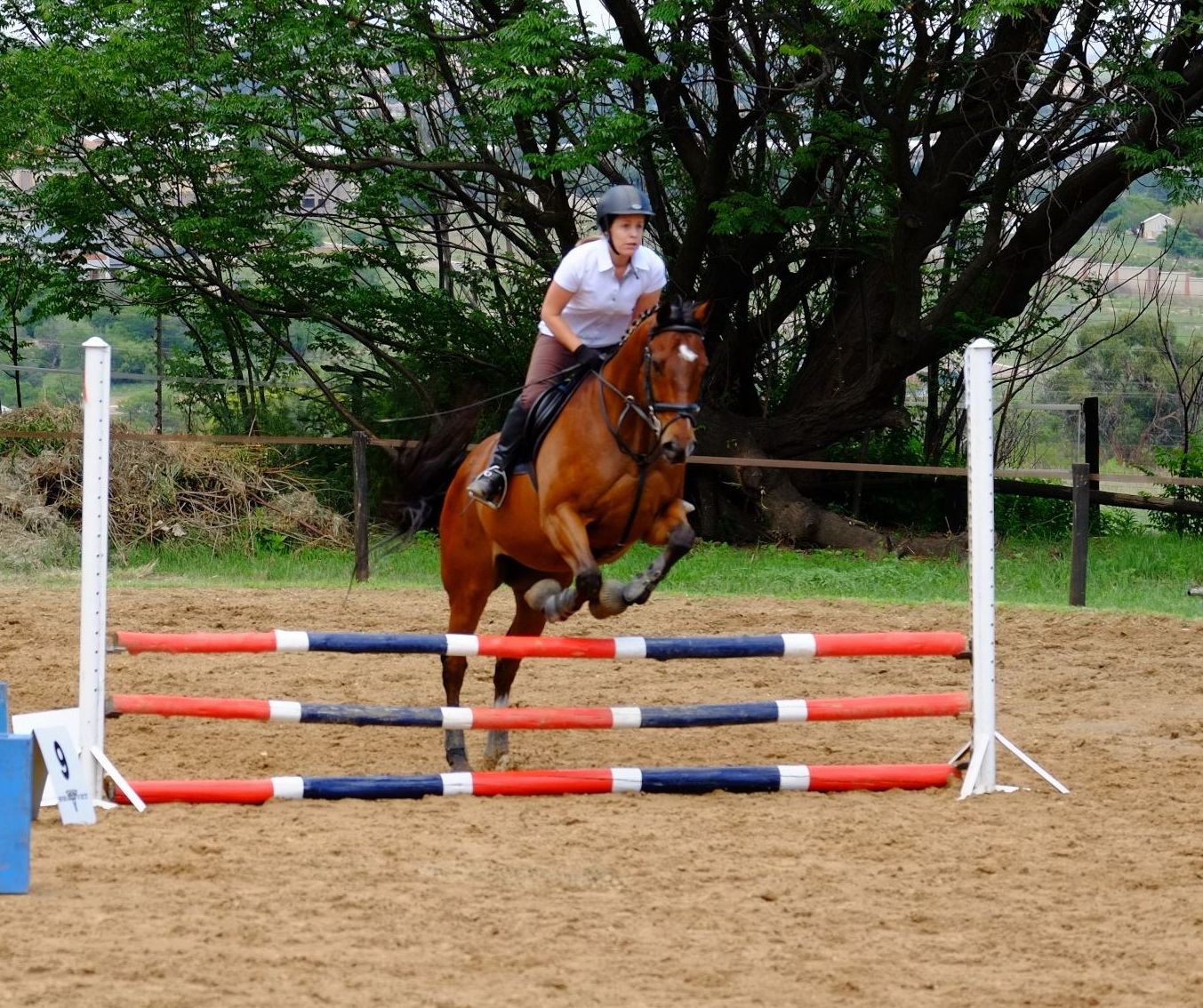 Photo's author:
Photo's author: 
 horsestockphotos.deviantart.com
horsestockphotos.deviantart.com source: shutterstock.com
source: shutterstock.com
